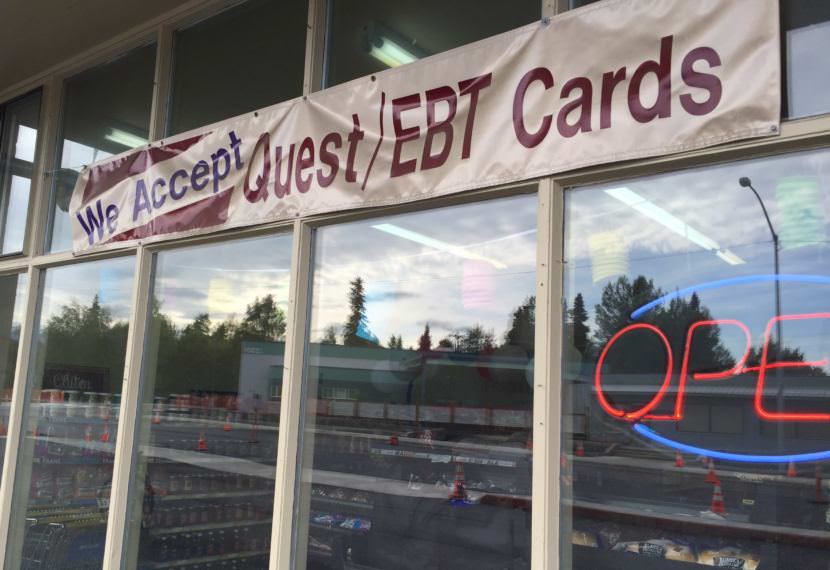
The U.S. Department of Agriculture is finalizing a new rule that could ultimately reduce the number of Alaskans receiving assistance through the Supplemental Nutrition Assistance Program, or SNAP — the federal program formerly known as food stamps.
Announced Wednesday morning, the rule affects states’ abilities to receive waivers for SNAP work requirements. As of Wednesday afternoon, officials with the Alaska Department of Health and Social Services said they were still waiting on guidance from the USDA.
But local food providers say they’re already concerned.
“We know many, many people are going to lose benefits because of this,” said Cara Durr, director of public engagement at the Food Bank of Alaska.
Durr said it’s one of several recent changes that could reduce food assistance to Alaskans in need. It concerns people designated “Able-Bodied Adults Without Dependents,” — people aged 18-49 for whom food assistance through SNAP is generally capped at three months within a three-year period. That is, unless they meet certain work requirements.
States with high unemployment rates or a lack of jobs could apply for waivers to those work requirements. The new rule revises the conditions under which states can receive waivers.
“We need to encourage people by giving them a helping hand but not allowing it to become an indefinitely giving hand,” said U.S. Secretary of Agriculture Sonny Perdue in a written statement. “Now, in the midst of the strongest economy in a generation, we need everyone who can work, to work.”
Durr called the term “able-bodied” misleading.
“You know, it’s not people that are just job-ready, just choosing to sit on their couches — it’s a really complex population to serve,” she said. “Certainly taking food assistance away from someone who is unable to work, or is trying to work but just can’t connect with a job … I mean, that’s not going to leave anybody better off.”
It’s still too early to know exactly how many Alaskans will be affected by the rule change. Another program change implemented in October expanded SNAP work requirements to a dozen regions around the state, according to DHSS. The impact of that expansion has yet to be fully realized, Durr said.
But the Food Bank of Alaska outreach workers are already fielding questions from confused SNAP recipients around the state, she said. The nonprofit works with the state’s Division of Public Assistance to offer statewide SNAP outreach and application assistance, and Durr said it sees the effects of the changes firsthand.
Approximately 84,707 Alaskans — more than 1 in 10 — were in the state’s SNAP program in October, according to preliminary numbers from DHSS. Changes to the food program would have a ripple effect throughout Alaska communities, Durr said.
“It’s an important resource for our clients,” she said. “And if there are cuts to that, or changes to benefit levels, things like that, we’re going to ultimately see those clients, because they’re going to have to turn somewhere else to get their food.”
